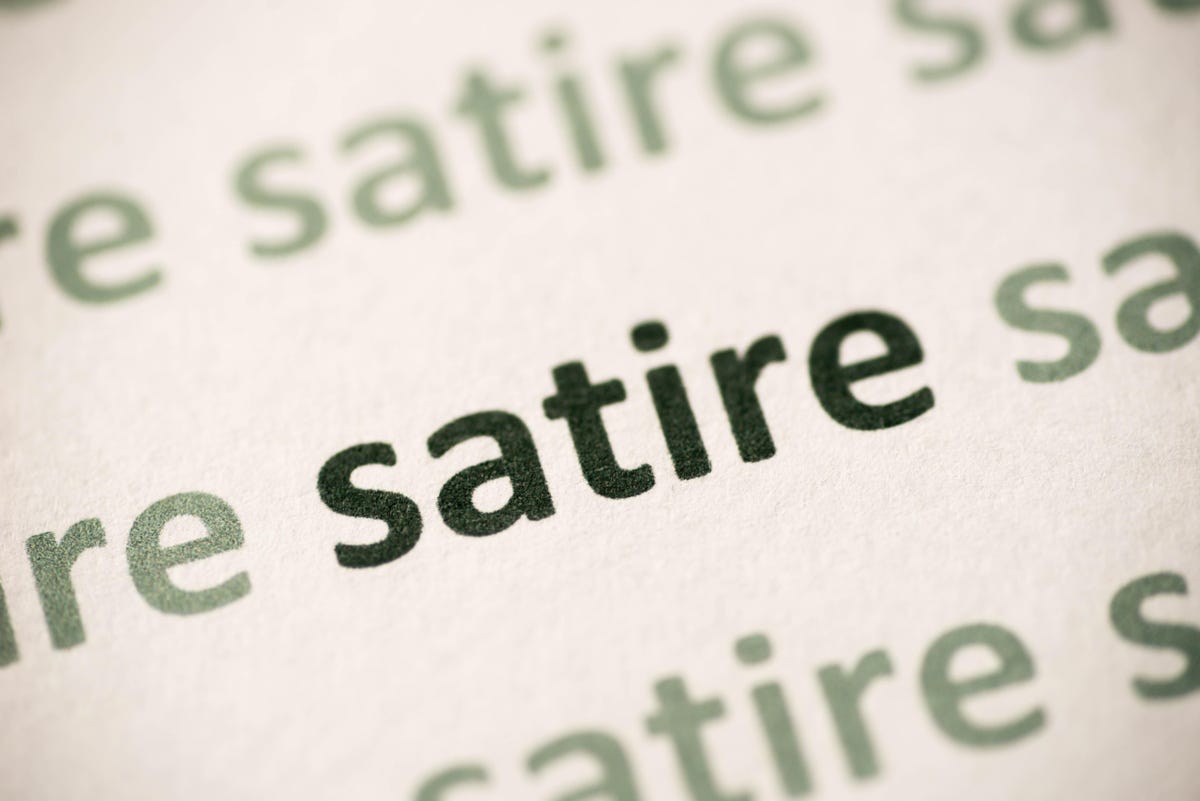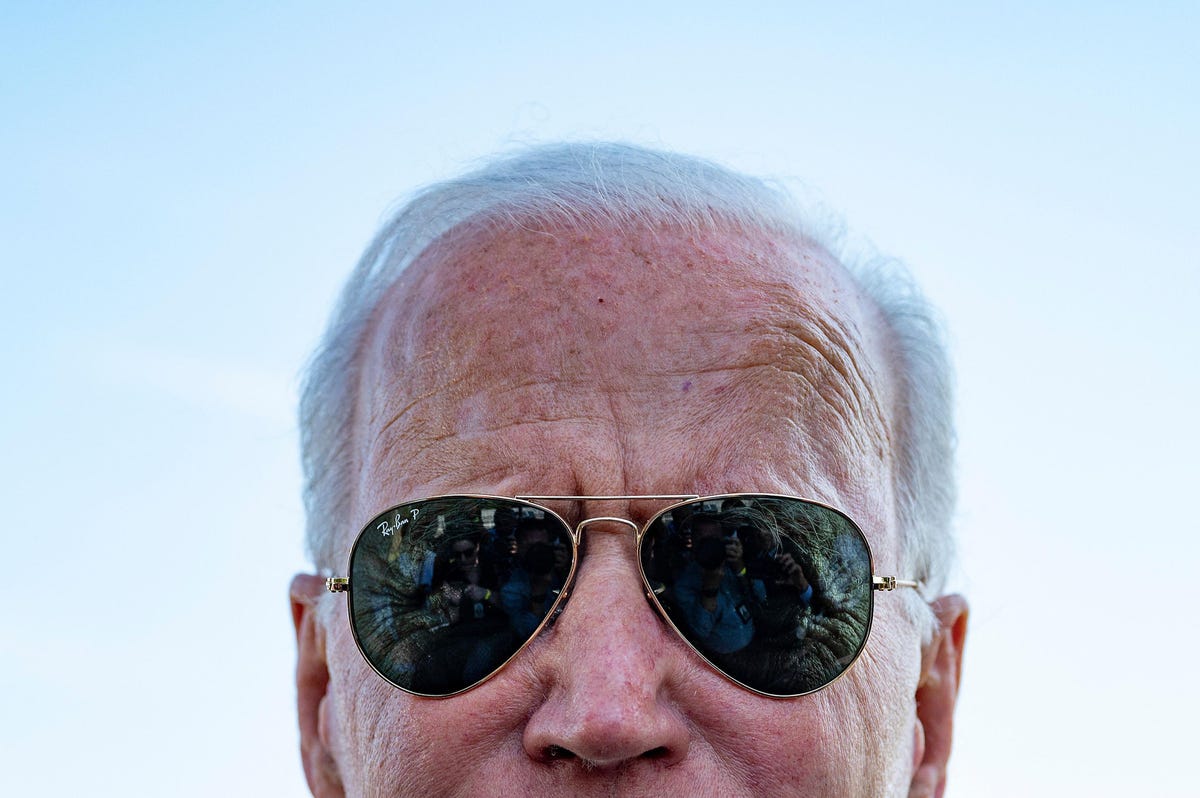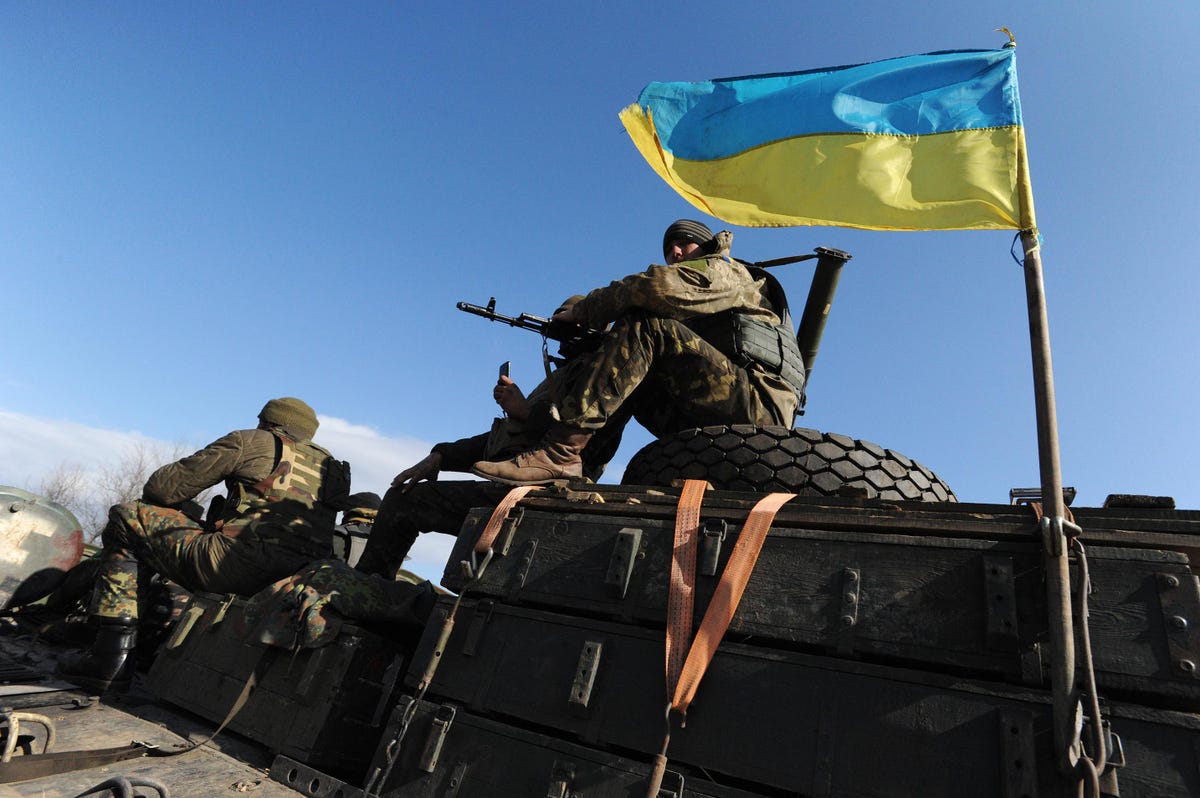A Russian policeman walks in Moscow’s Purple Sq. with St. Basil’s Cathedral and Lenin’s mausoleum within the background.
AFP through Getty Photographs
RIA Novosti, a Russian authorities information company whose origins date again to World Warfare II, has printed practically three dozen posts containing deceptive and false data on TikTok over the previous 4 days, defying the social media community’s purported try and cease new content material in Russia.
In one video on Wednesday, RIA Novosti laced collectively recorded U.S. Senate testimony from Victoria Nuland, a State Division official, about biological-research labs in Ukraine with a voiceover falsely suggesting Ukraine has lined up bio-warfare tasks financed by America, a well-liked new vein of Russian misinformation.
One other RIA Novosti video from Wednesday exhibits an interview with a person the outlet identifies as a captured Ukrainian soldier, who says he was shot throughout a standoff with Russian forces after which deserted by his unit. “Everybody was capturing,” he recollects, talking Ukrainian with a heavy Russian accent. “I used to be wounded in a leg and left in a ditch.” A third video suggests the Zaporizhzhya Nuclear Plant seized by Russian troops contained a big cache of weapons and ammunition, a part of a seamless storyline to color Ukraine as a long-standing risk to Russia. (Western authorities have launched no proof of a navy set up at Zaporizhzhya.) RIA Novosti pushed these movies and others at greater than 200,000 followers, who’ve supported the publication’s clips with 3.4 million Likes.
It’s unclear why TikTok has continued to permit Moscow-headquartered RIA Novosti to publish after the corporate introduced Sunday a ban on new content material from Russia that has stopped different state media companies, together with RT, Sputnik and NTV, from posting to TikTok. The prohibition was a response to a newly handed legislation in Russia to tamp down on data opposite to the official narrative on Ukraine supplied by President Putin. (There’s been at the very least one different drawback with TikTok’s ban. It allowed RT editor in chief Margarita Simonyan to continue posting via Tuesday.)
RIA Novosti didn’t return a request to remark for this story. Neither did TikTok, which is owned by Beijing-based ByteDance. When reached for an earlier story on this matter, a TikTok spokesperson on Monday stated the ban was “rolling out throughout the app in Russia.”
RIA Novosti’s continued presence on TikTok raises questions concerning the effectiveness of TikTok’s ban and highlights the inherent problems and issues with moderating content material on a website as massive as TikTok, a scenario that has lengthy plagued older firms like Fb and YouTube. TikTok has wanted to confront points about political content material earlier than—each right here within the U.S. over the last presidential election and the June 2020 protests round George Floyd’s loss of life and over worldwide issues, too, together with through the Taliban’s rise to energy final summer time. Its executives have fretted internally concerning the pervasiveness of political content material on the platform and, prior to now, expressed a want to maintain TikTok centered on gentle leisure.
But the social community has develop into a well-liked place for movies concerning the conflict in Ukraine, the immense quantity producing a singular second within the quick historical past of the app. #Ukraine, for instance, has attracted 24.8 billion views in a matter of weeks, making it probably the most in style classes of movies ever. These movies have been a mixture of real and false content material, permitting events on either side of the battle to create an more and more hard-to-decipher narrative about what’s taking place in Ukraine.
However RIA Novosti doesn’t fall into this grey space. Researchers who observe Russian disinformation say it dispenses the identical kind of conspiracy theories, propaganda and different inaccurate data that RT and Sputnik each printed earlier than TikTok’s content material ban took them off the app. In keeping with the Institute for Strategic Dialogue, RIA Novosti is the third most-followed Kremlin information group on TikTok, behind accounts held by RT editor in chief, Simonyan (223,000 followers) and NTV (1.3 million).
RIA Novosti started life because the Soviet Data Bureau in 1940, an outlet for the Soviets to disseminate information through the Nazi invasion of Russia after which its marketing campaign in opposition to Germany through the the rest of World Warfare II. After the Soviet Union fell, RIA Novosti loved a number of many years of existence as an editorially unbiased group whereas persevering with to depend on the federal government for at the very least a portion of its funds.
It chronicled Russia’s chaotic rebirth through the 90s and 2000s, changing into a well-liked vacation spot for Russian journalists wanting to report on their new nation. Katya Zabrovski was considered one of them, tasked with masking the opposition events that rose up in Putin’s preliminary years in energy when data flowed extra freely in Russia. “I used to be writing no matter they have been saying, no matter they have been doing. If there was criticism, I used to be reporting that and giving them direct quotes,” says Zabrovski.
Issues all modified in December 2013, when an more and more emboldened Putin dissolved the RIA Novosti newsroom, a part of a number of performs at the moment by the Russian president to extend his political energy and prohibit data. “It was an actual drama. When the individuals who had labored there and considered themselves as journalists, this information was a shock,” says Vasily Gatov, who labored at RIA Novosti then as an government director. An outdated hand at Moscow retailers and American ones like ABC Information, Gatov had been employed to assist RIA Novosti thrive within the Web Age, bolstering its presence on Fb and Google Information and enhancing its digital infographics.
Up till then, RIA Novosti had lined worldwide affairs, too, however that protection was reassigned to 2 new media organizations: RT and Sputnik. Putin refocused RIA Novosti on home information, giving the company’s high job to a supporter, Dmitry Kiselyov, an arch-conservative tv host. Kiselyov was already well-known for his one-hour program during which he mentioned conspiracy theories about overseas threats and his stridently anti-gay views. “He’s an outspoken propaganda seller,” says Gatov, who give up RIA Novosti that December. “He instructed [RIA Novosti’s journalists] that ‘Now it’s important to do what the federal government tells you to do.’”
Kiselyov stays RIA Novosti’s head at the moment, and within the years since, RIA Novosti has developed to a spot staffed at the very least partially by a “new technology of Chilly Warfare warriors,” Gatov says. “Who hate America specifically.”
Dmitri Slavinsky and Katya Soldak contributed to this story.






